4,200-year-old burial of Bronze Age chieftain discovered under UK skate park

Archaeologists have unearthed the remains of a Bronze Age chieftain buried with profound wealth: Instead of receiving just one cattle "head and hoof" offering in his grave, a prize item reserved for VIP burials of that age, the chieftain had four such offerings.
Even more confounding was the discovery of another burial near the chieftain's remains, that of an older man buried in a seated position, according to Foundations Archaeology, a British-based archaeological consultancy. The older man was buried with one head and hoof offering and nothing else, said Andy Hood, an archaeologist with Foundations Archaeology, who helped excavate the site.
"One of the mysteries is, what was the relationship between those two men?" Hood told Live Science. The two likely had some type of social bond, but it's unclear why they were buried so close to each other, he said.
Related: 7 bizarre ancient cultures that history forgot
Archaeologists found the burials in 2017, ahead of the construction of a skate park in Lechlade-on-Thames, a town in the southwestern county of Gloucestershire, England. Radiocarbon dating revealed that the two men lived in about 2200 B.C.
The chieftain's burial held the skulls and hooves from four different cattle, Hood said. Head and hoof burial offerings were practiced in Europe during the Bronze Age, but were less common in Britain. "In fact, all previous examples here [in the U.K.] have been single cattle burials, so the Lechlade burial is unique in this regard," because it had four, Hood said.
"It's quite a significant investment of wealth to go into the ground," Hood added. "There's a chance that these animals were slaughtered as part of a ceremony related to the burial."
Get the world’s most fascinating discoveries delivered straight to your inbox.
The age and style of the burials, as well as artifacts found near the chieftain, suggest that these men were part of the Beaker culture, named for its beaker-like ceramic pots. According to recent DNA studies, the people in this culture arrived from mainland Europe around 2400 B.C. They were an impressive lot who might have been the first to use copper and bronze in Britain, "so we think that their arrival is a fairly important moment in prehistory," Hood said.
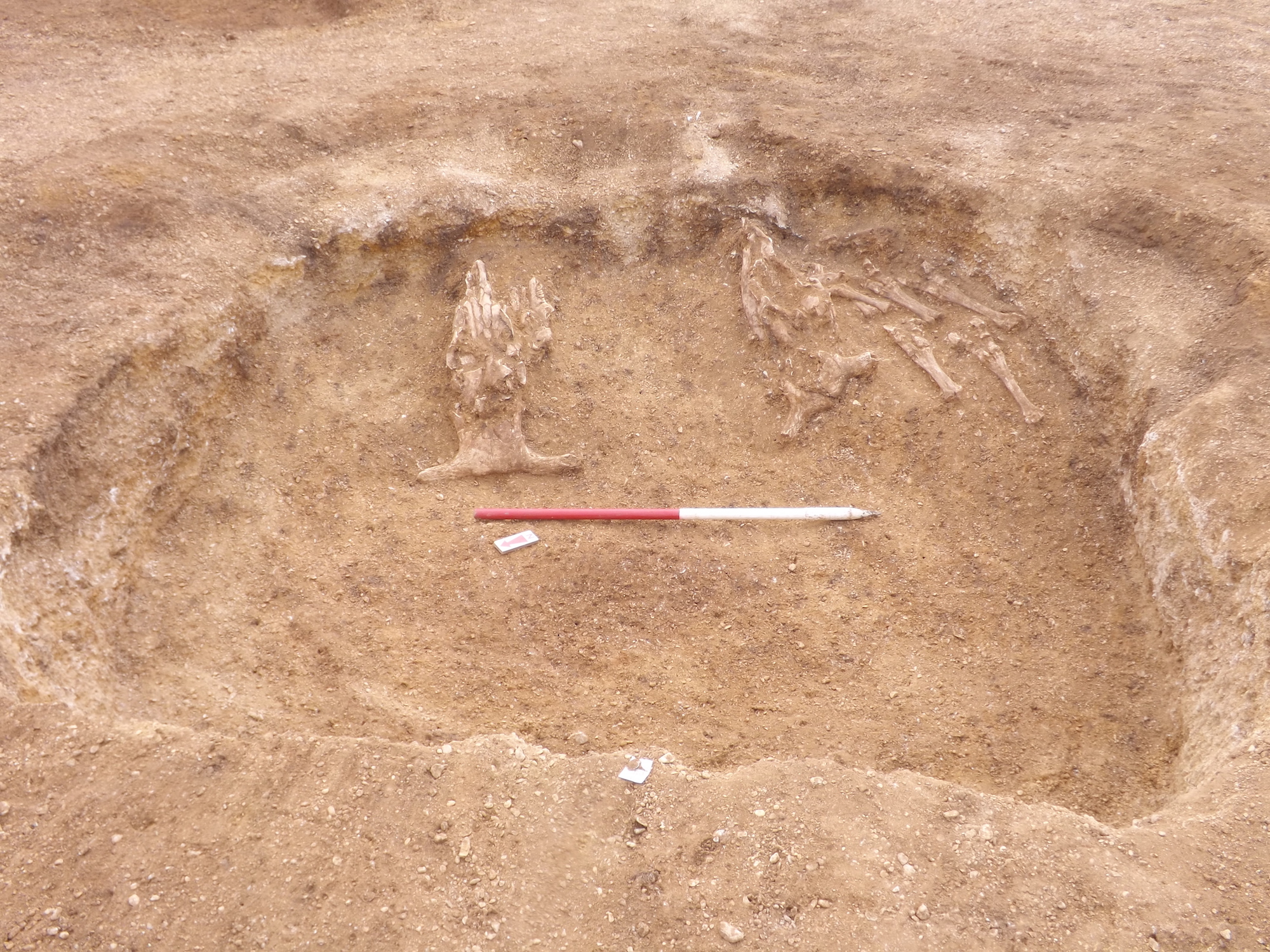
Gallery
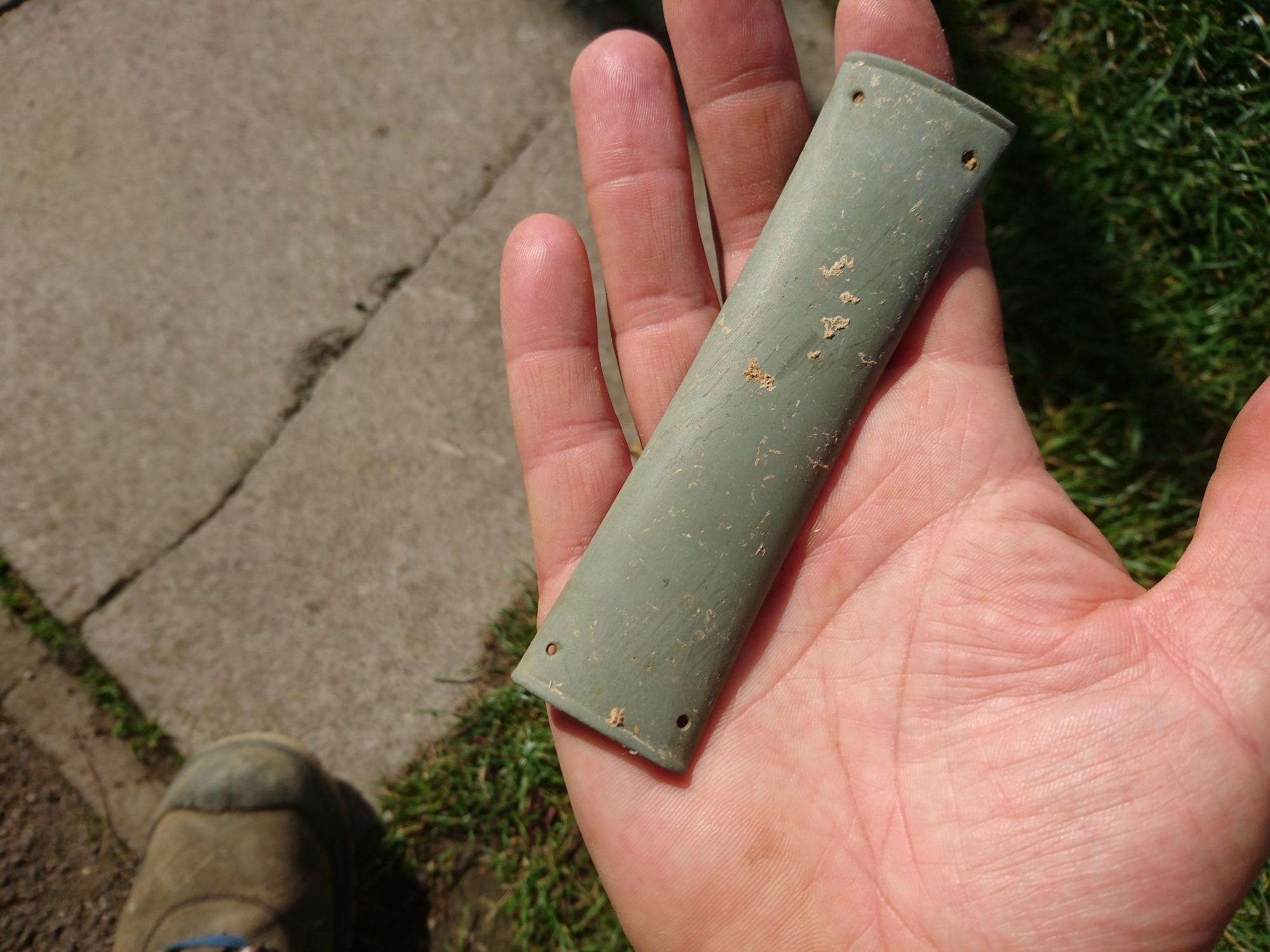

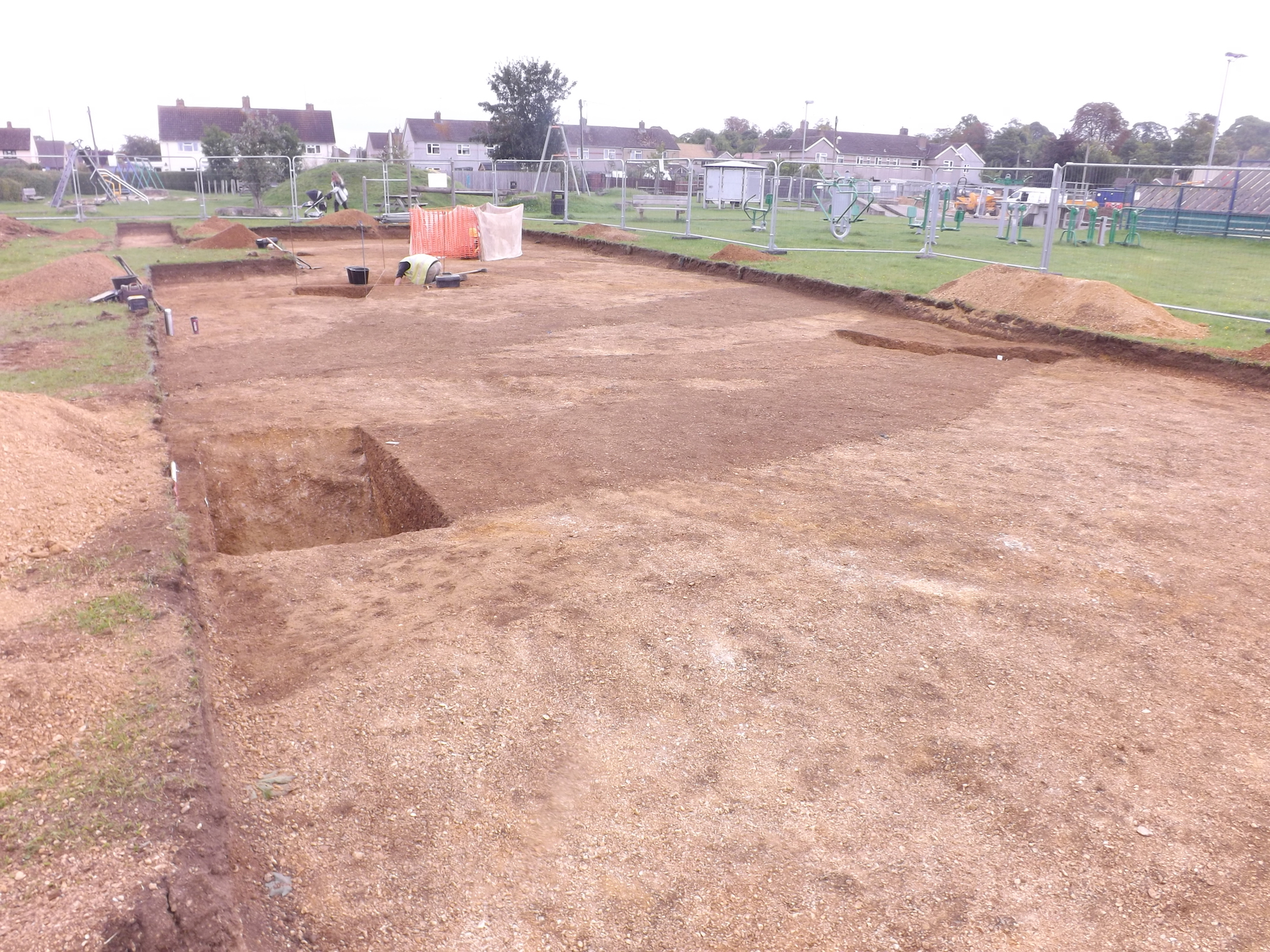
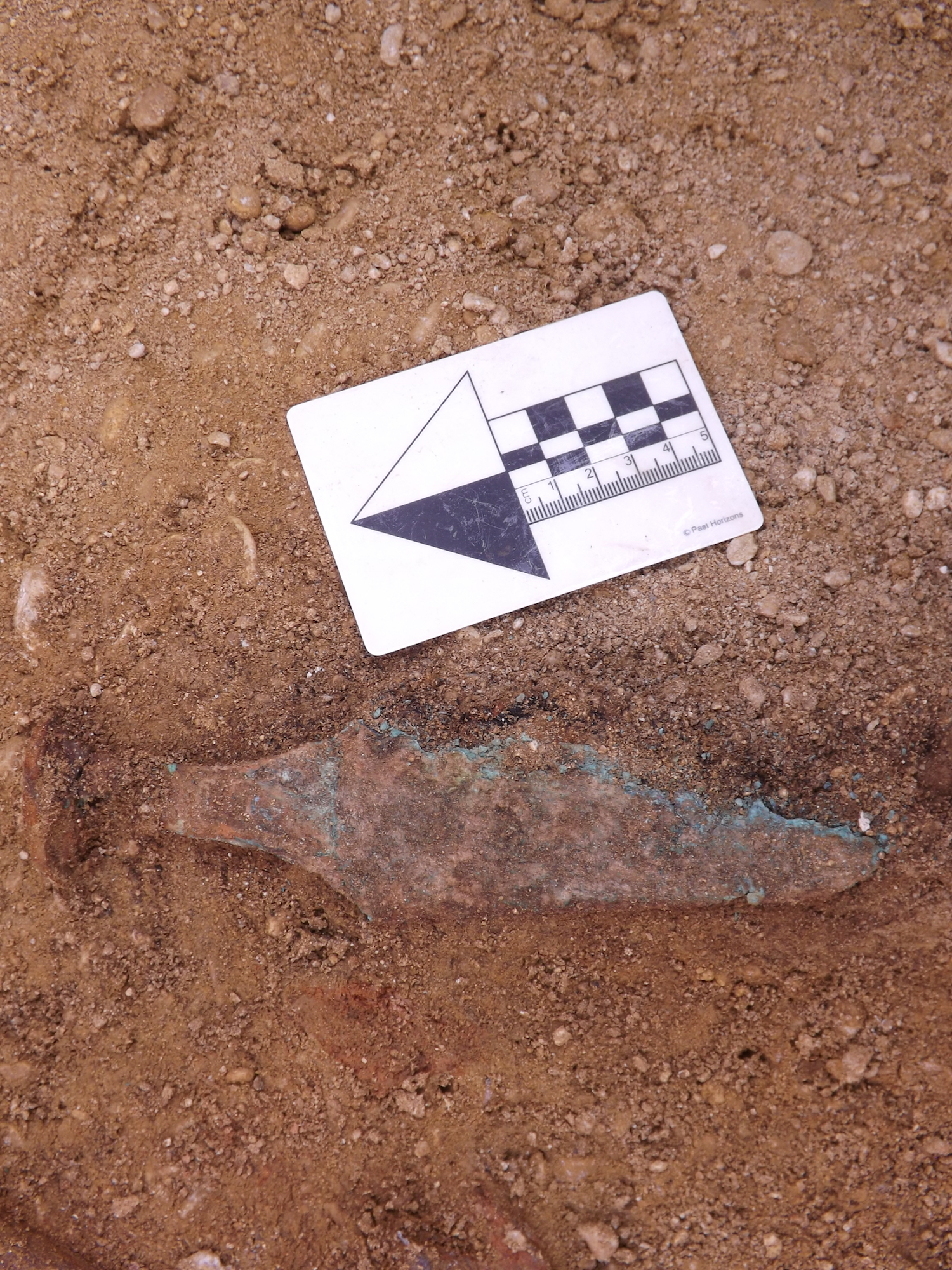
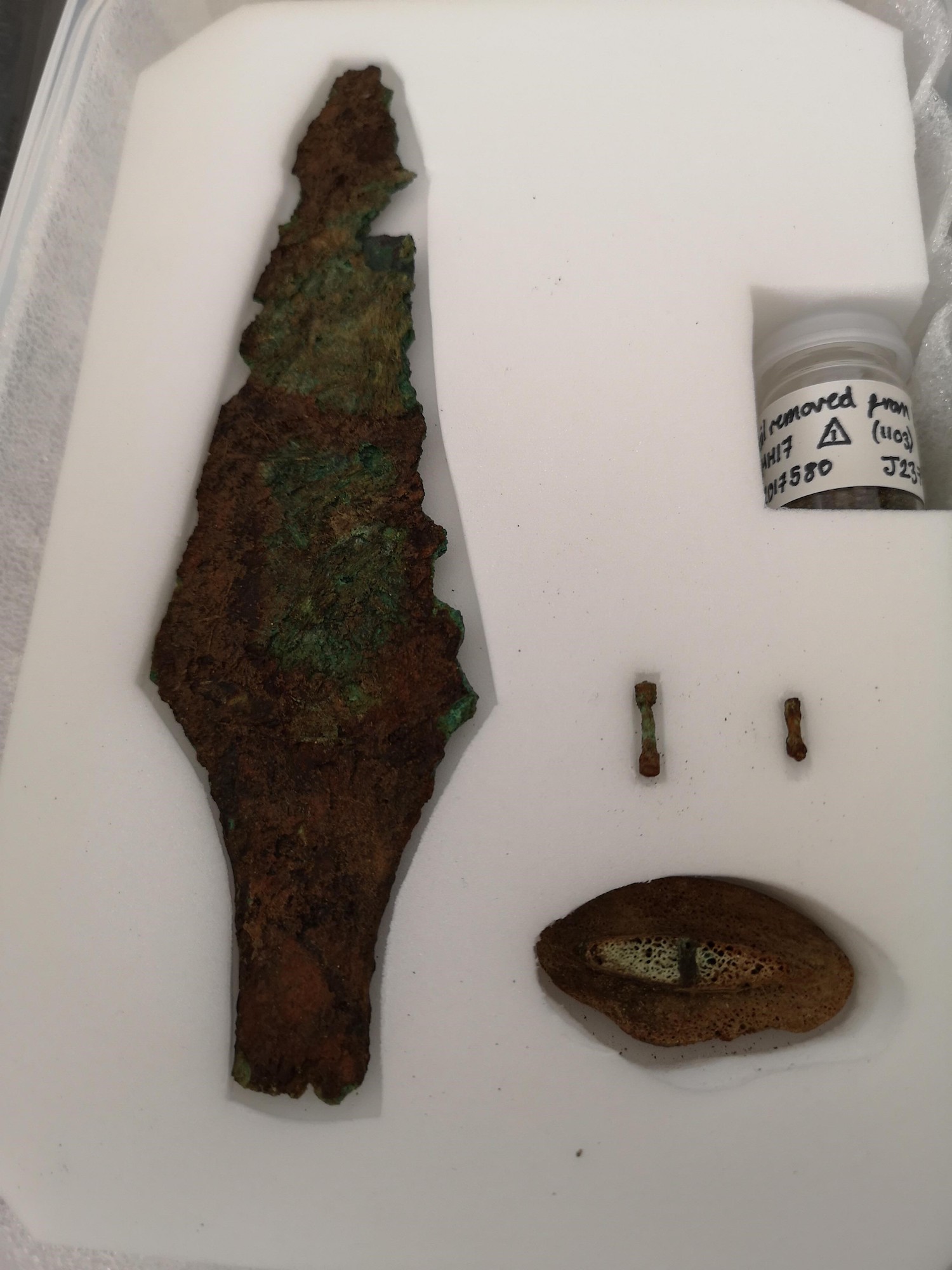
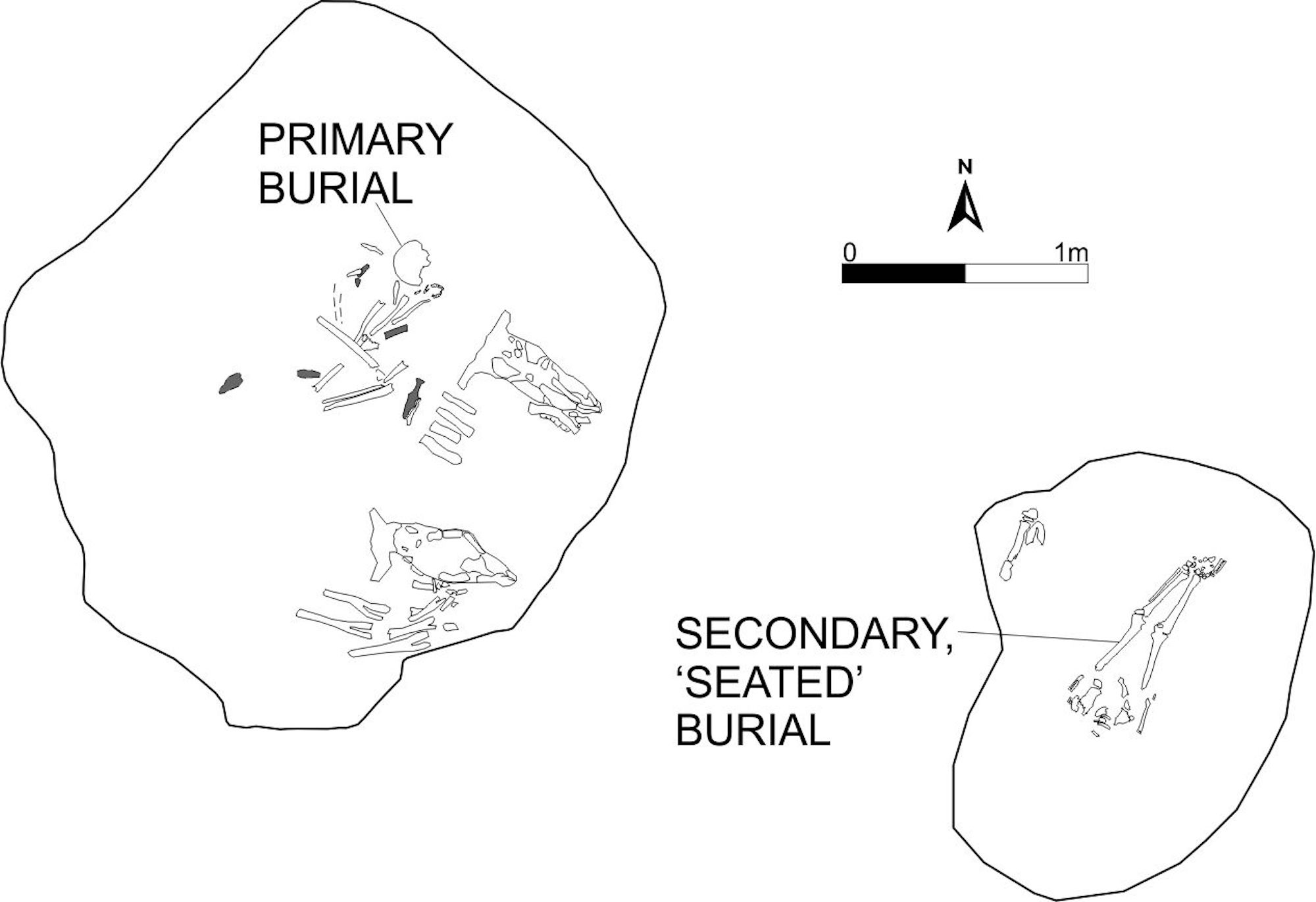

Parting package
The Beaker culture commonly buried its dead with a "standard package" of grave goods: a beaker pot, a copper dagger, a stone wrist guard used by archers, a "strike-a-light kit," amber beads and sometimes a cattle head and hoof offering, Hood said.
The chieftain had all these goods, except for the beaker pot, the archaeologists found. Because of the missing piece, "we think that this individual was a revered 'specialist' within Beaker society — somebody who wasn't associated with the direct symbolism attached to the Beaker pot itself," Hood said.
Even so, his grave goods were impressive and included: a copper dagger with with a whale-bone pommel (the round knob at the end of the handle), a stone wrist guard, an amber bead, a flint and iron pyrite for starting a fire, and the cattle offerings.
Related: Back to the Stone Age: 17 Key Milestones in Paleolithic Life
The chieftain was buried at the center of a circular ditch that, at the time of burial, was a barrow, meaning that it had soil piled on top of it. Next to him, just off-center but still within the circular enclosure, were the remains of the older man, who was about 50 to 60 years old when he died.
Other news outlets have speculated that this older man was a shaman who may have been sacrificed to help the chieftain in the afterlife, but there is no evidence to support those claims, Hood said.
"The idea of him being a 'shaman' was postulated by some British newspapers," Hood said, adding that "there is no evidence that he was sacrificed."
Still, the older man's burial is odd. "He was buried in an unusual 'seated' position — his legs were present extending downwards towards the base of his grave pit," Hood said. "We haven't found a direct parallel elsewhere in Bronze Age Britain."
Most people buried in Bronze Age Britain were arranged in a crouched position on their sides, as the chieftain was. So the older man's proximity to the chieftain, as well as the man's lack of a Beaker "package" and strange burial position, may remain a mystery for the ages.
- In photos: Stunning treasures from the burial of an Anglo-Saxon prince
- In photos: Early Bronze Age chariot burial
- Photos: Prehistoric village holds Bronze-Age treasures
Originally published on Live Science.
OFFER: Save 45% on 'How It Works' 'All About Space' and 'All About History'!
For a limited time, you can take out a digital subscription to any of our best-selling science magazines for just $2.38 per month, or 45% off the standard price for the first three months.

Laura is the managing editor at Live Science. She also runs the archaeology section and the Life's Little Mysteries series. Her work has appeared in The New York Times, Scholastic, Popular Science and Spectrum, a site on autism research. She has won multiple awards from the Society of Professional Journalists and the Washington Newspaper Publishers Association for her reporting at a weekly newspaper near Seattle. Laura holds a bachelor's degree in English literature and psychology from Washington University in St. Louis and a master's degree in science writing from NYU.



